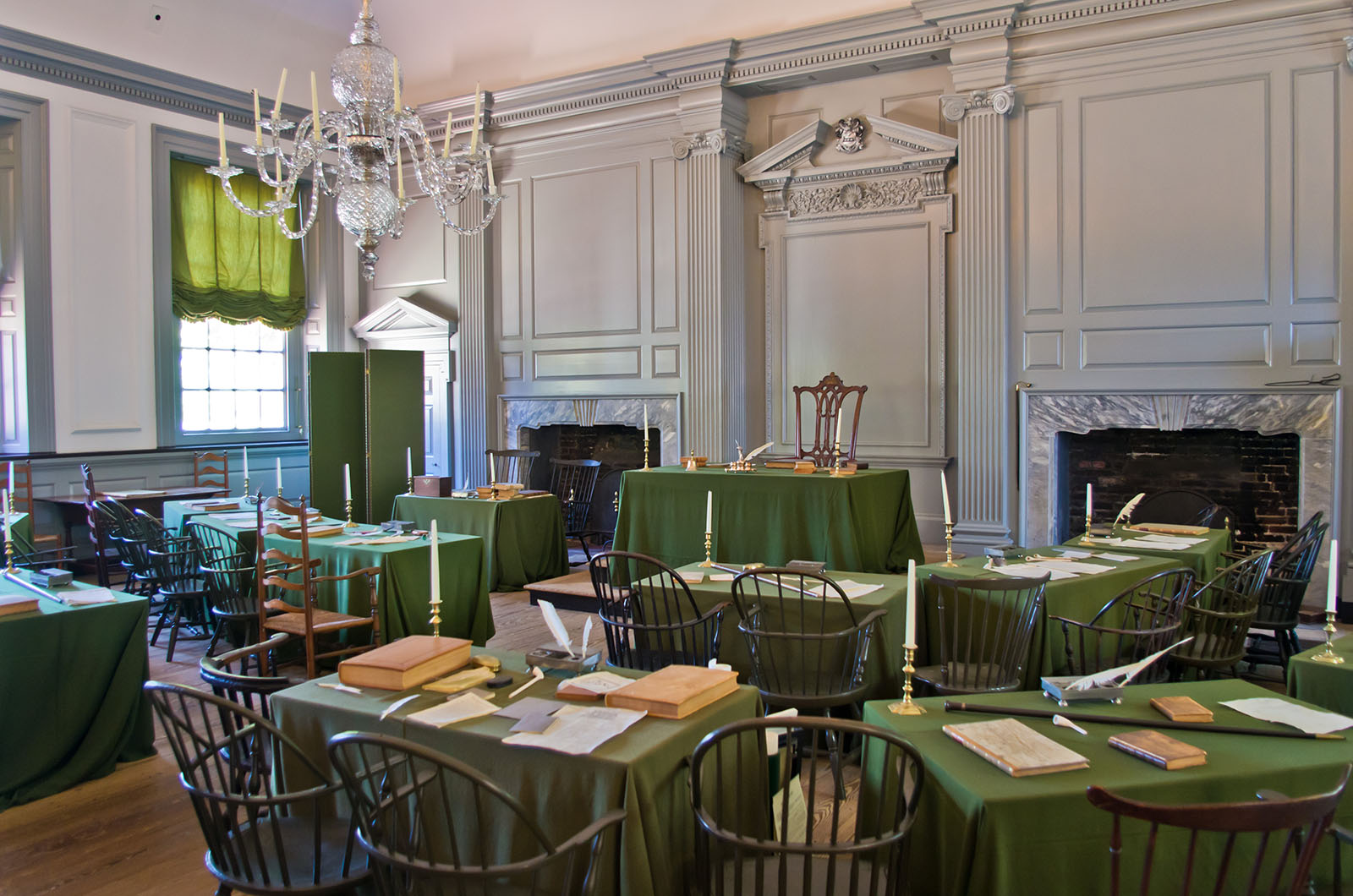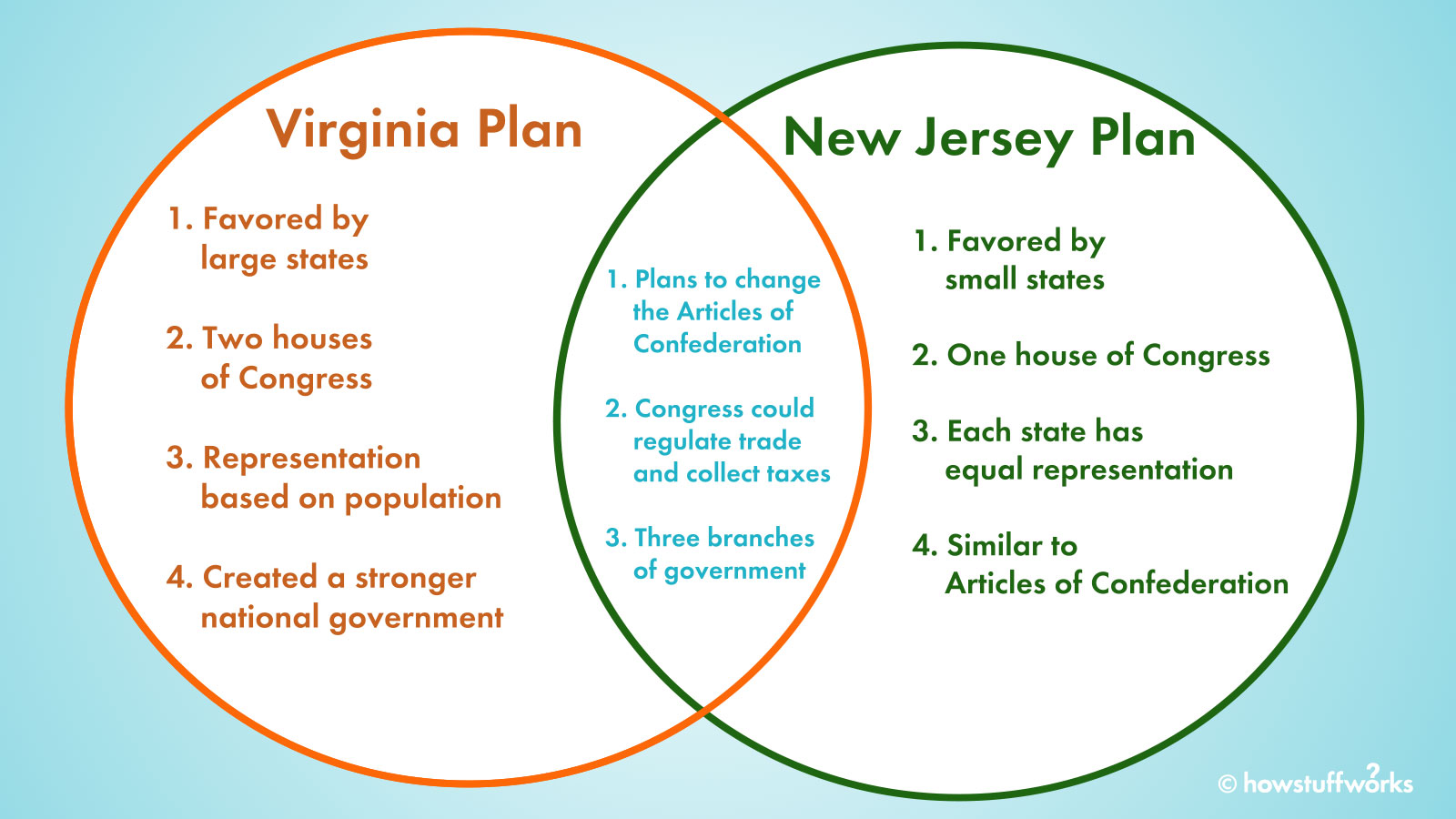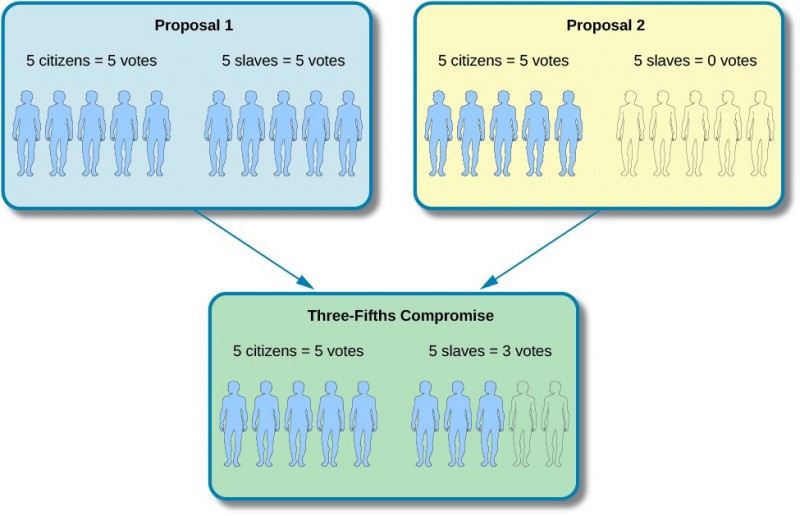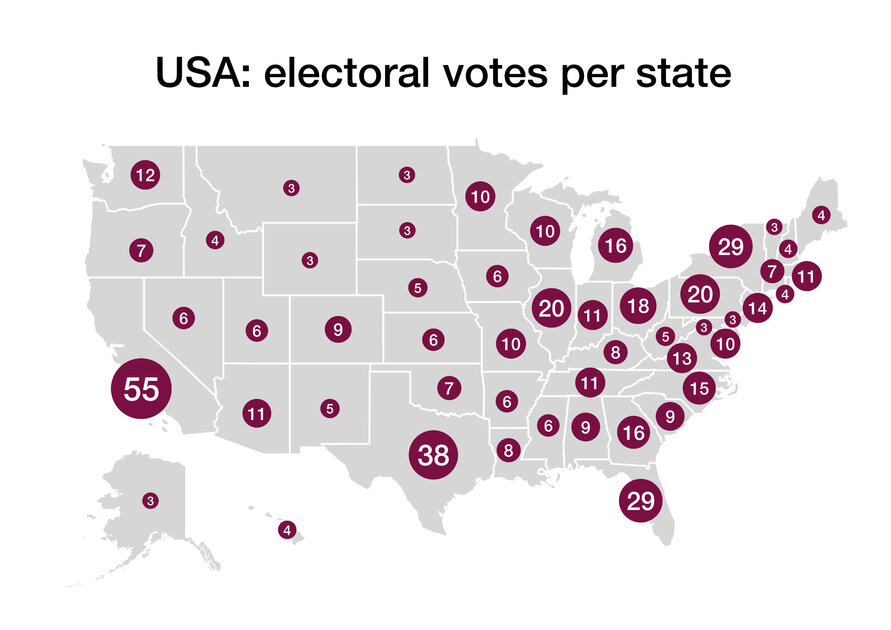3.8 The Constitutional Convention and Debates over Ratification
5 min read•january 11, 2023
J
James Glackin
Dalia Savy
AP US History 🇺🇸
454 resourcesSee Units
The weak factors within the Articles made many people feel as though the Articles of Confederation needed to be replaced by a set of laws with a more central authority and a federal government with enforcement power.
Creating the Constitution
The Annapolis Convention
To review what could be done about the country's inability to overcome critical problems, George Washington hosted a conference at his home in Mt. Vernon, Virginia. Representatives agreed that the problems were serious enough to hold a meeting later in Annapolis, Maryland so that all the states could be represented. Only five states sent representatives to the Annapolis Convention. Despite the limited attendance, the convention did produce a report recommending that a new convention be held the following year in Philadelphia "for the sole and express purpose of revising the Articles of Confederation."
The Constitutional Convention
The convention was attended by 55 delegates from 12 of the 13 states. Rhode Island did not send any representatives. The convention lasted for 4 months, and the delegates, many of them experienced and prominent leaders, engaged in intense and prolonged debate. In the end, they proposed a new framework for government, known as the Constitution of the United States.
The delegates knew they needed a new set of laws, but there were debates about how to go about making them. How would power be divided?

Delegates to the Constitutional Convention assembled, argued, and finally agreed in this room, styled in the same manner as during the Convention. Photograph of the Assembly Room, Independence Hall, Philadelphia, Pennsylvania. Image Courtesy of Wikimedia. Creative Commons Attribution-Share Alike 3.0 Unported.
Debates over Ratification
One of the main debates at the Constitutional Convention was how to balance the power between the states in the new government. As you know, the Articles of Confederation had given each state an equal vote in the Confederation Congress, but this led to difficulties in passing legislation and achieving consensus on important issues.
During the convention, several different plans for representation in Congress were proposed:
The Virginia Plan
The Virginia Plan was proposed by James Madison, Edmund Randolph, and others from the state of Virginia:
- It called for a strong national government with three branches: executive, legislative, and judicial.
- The legislative branch would be bicameral, with both houses apportioned according to population.
- A bicameral legislature is a system of government in which the legislative power is vested in two separate chambers or houses. The two houses in a bicameral legislature typically have different powers, methods of selection or election, and ways of representing different interests or constituencies. The purpose of having a bicameral legislature is to provide a check and balance on the power of the other house and to ensure that different perspectives and interests are considered in the lawmaking process.
- For reference, the modern-day Congress is a bicameral legislature, composed of the Senate and the House of Representatives. The Senate and the House have different responsibilities, and each chamber has its own procedures and rules.
- Representation in the lower house would be determined by population, and representation in the upper house would be determined by the lower house.
- A stronger federal government would have more power to regulate commerce, collect taxes, and enforce laws.
- It was proposed to give more power to the more populous states in Congress.

Image Courtesy of HowStuffWorks
The New Jersey Plan
The New Jersey Plan was proposed by William Paterson and others from the state of New Jersey:
- It called for a unicameral legislature with equal representation for each state.
- The national government would have a limited role and would not be able to regulate commerce, collect taxes, or enforce laws.
- It was proposed to give more power to the smaller states, as it wanted one vote for each state regardless of population.
The Great Compromise
After much debate, the Great Compromise, also known as the Connecticut Compromise, was negotiated:
- Proposed by Roger Sherman of Connecticut
- It combined elements of the Virginia Plan and the New Jersey Plan.
- It established a bicameral legislature with a different method of representation in each house.
- The lower house, the House of Representatives, would be apportioned according to population.
- The upper house, the Senate, would have equal representation for each state, with each state having two senators.
- This compromise resolved the disagreement over how much power each state should have in the new government and helped get the Constitution ratified.
Looks familiar? This is how we established our government with a bicameral Congress, representing both the Virginia and New Jersey Plans. It allowed for equal representation in Congress and balanced the power of small and large states.
The Three-Fifths Compromise
Now that a framework for Congress was established, the delegates at the Constitutional Convention discussed the representation of slave states.
The Three-Fifths Compromise determined how enslaved people would be counted in terms of representation and taxation. The compromise was reached between the northern states, which were generally more industrialized and had fewer enslaved people, and the southern states, which were more agrarian and had more enslaved people.

Image Courtesy of Nigerian Scholars
The compromise stated that for the purpose of determining representation in the House of Representatives, and for the purpose of apportioning direct taxes, each enslaved person would be counted as three-fifths of a free person. The compromise was intended to address the concerns of the southern states that their representation in Congress would be diminished if enslaved people were not counted at all, while also addressing the concerns of the northern states that counting enslaved people fully would give the southern states too much representation.
Ending the Slave Trade
The Constitutional Convention did not deal with the question of the slave trade directly, but the Constitution itself included a provision that prohibited Congress from ending the international slave trade until 1808. However, in 1807, the U.S. Congress passed the Act Prohibiting Importation of Slaves, which banned the importation of enslaved people from Africa and the foreign slave trade, effectively ending it on January 1, 1808. This is important to note that this did not end slavery itself in the U.S. and it was still legal for people to own enslaved people within the states, it just limited the importing of enslaved people from Africa.
The Electoral College
The Convention delegates also agreed to establish a system of electing the president, which was later known as the Electoral College. The purpose of this was to give smaller states some representation in the presidential election, while also allowing the election to be conducted more efficiently. Under this system, each state is allotted a number of electors based on its representation in Congress, and the candidate who receives a majority of electoral votes (270 or more) becomes president.

Image Courtesy of Election Reformers Network
As you know, the electoral college system has been the source of much controversy and criticism, with some arguing that it can lead to an election of a candidate who did not receive the most popular votes and that it gives disproportionate power to the small states over larger states. There have been some proposals and attempts in the past to change or replace the Electoral College system.
The Constitution was finished on September 17, 1787, and then sent to the states for ratification.
Browse Study Guides By Unit
🌽Unit 1 – Interactions North America, 1491-1607
🦃Unit 2 – Colonial Society, 1607-1754
🔫Unit 3 – Conflict & American Independence, 1754-1800
🐎Unit 4 – American Expansion, 1800-1848
💣Unit 5 – Civil War & Reconstruction, 1848-1877
🚂Unit 6 – Industrialization & the Gilded Age, 1865-1898
🌎Unit 7 – Conflict in the Early 20th Century, 1890-1945
🥶Unit 8 – The Postwar Period & Cold War, 1945-1980
📲Unit 9 – Entering Into the 21st Century, 1980-Present
🚀Thematic Guides
🧐Multiple Choice Questions (MCQ)
📋Short Answer Questions (SAQ)
📝Long Essay Questions (LEQ)
📑Document Based Questions (DBQ)
📆Big Reviews: Finals & Exam Prep
✍️Exam Skills (MC, SAQ, LEQ, DBQ)

Fiveable
Resources
© 2023 Fiveable Inc. All rights reserved.